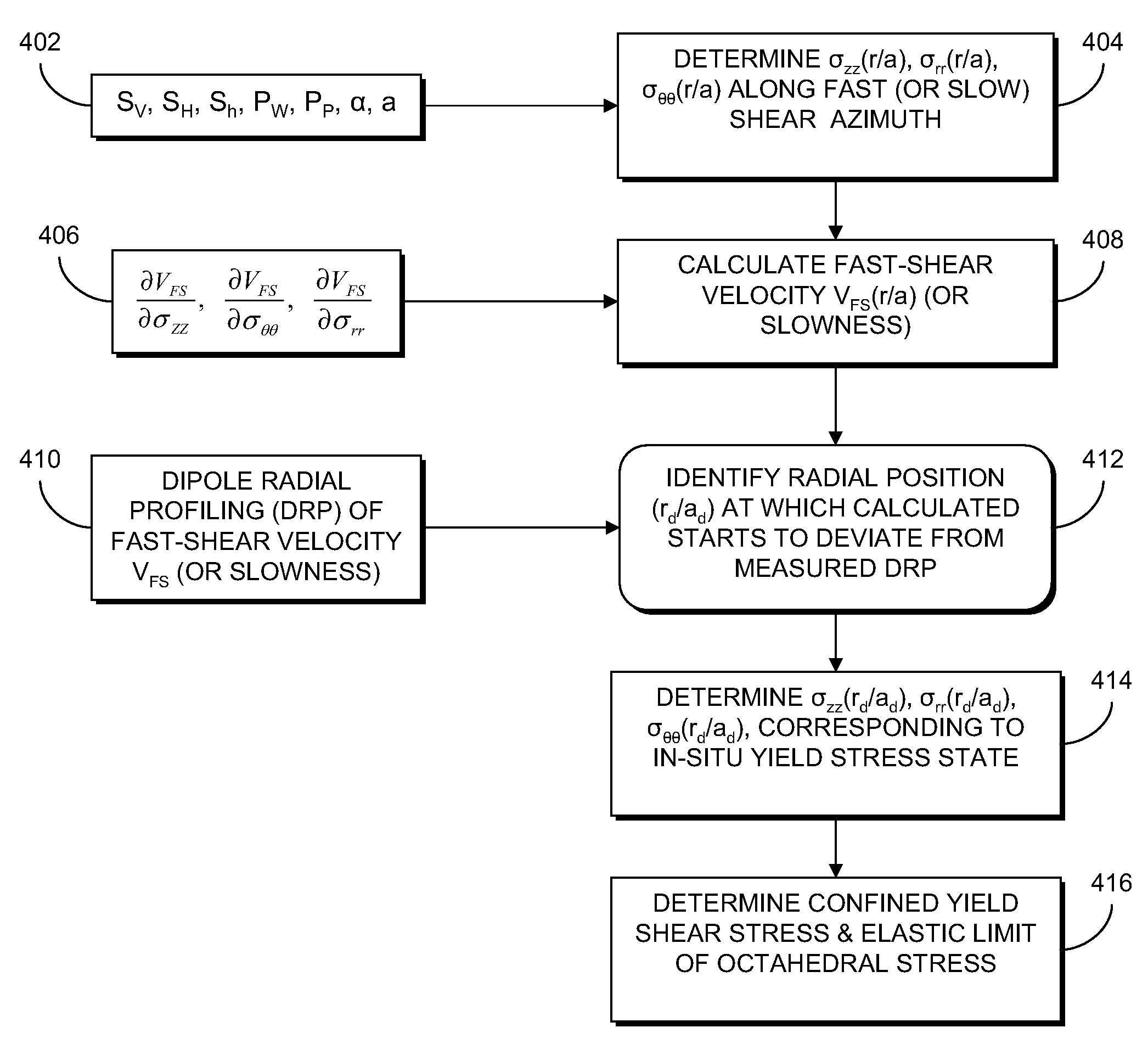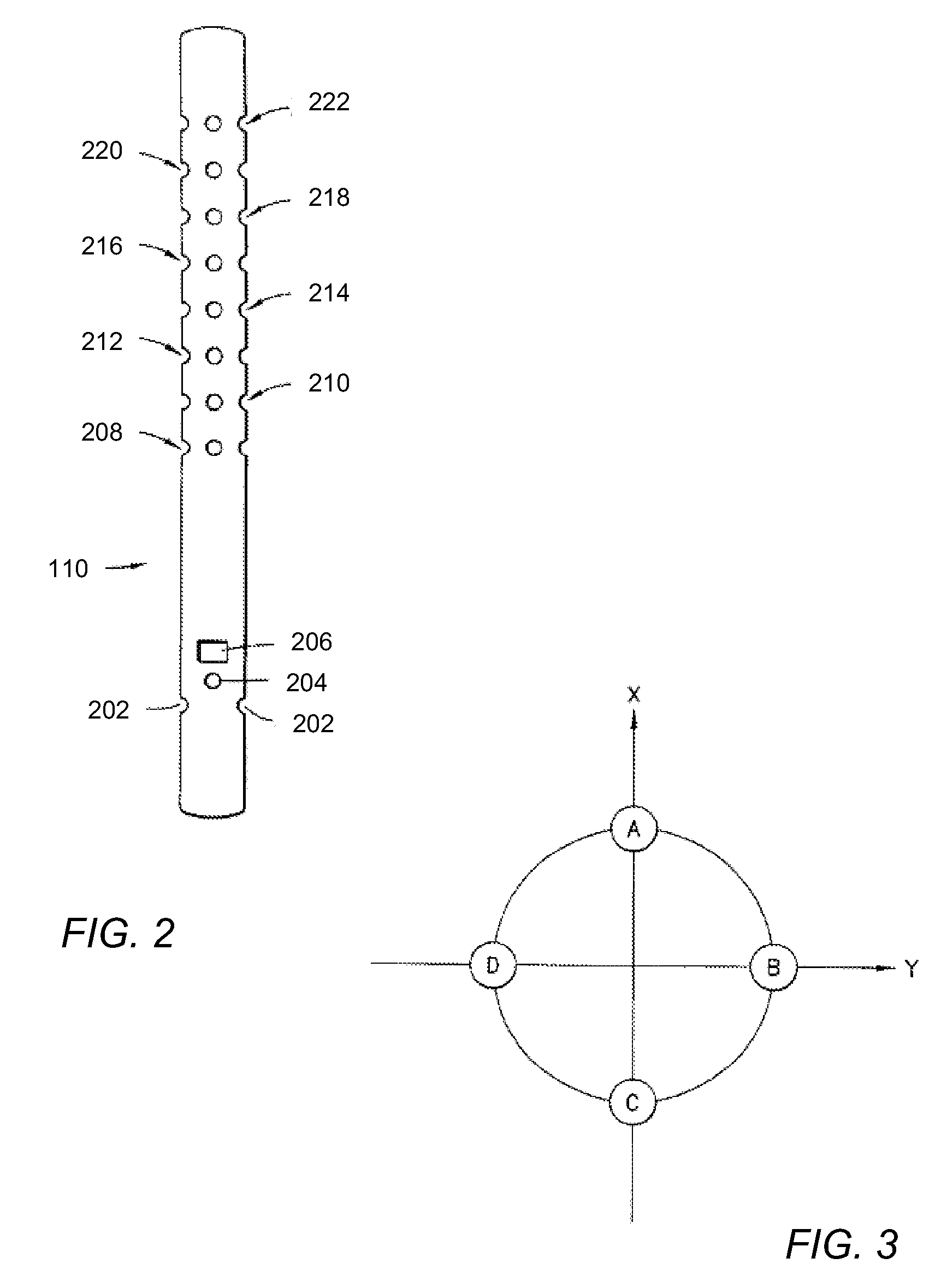In-situ determination of yield stress state of earth formations
a technology of yield stress and earth formation, which is applied in the field of earth formation investigation, can solve problems such as complete rock failure, and achieve the effect of accurate representation of elastic and plastic limits of octahedral stress and reliable estimation of in-situ properties
- Summary
- Abstract
- Description
- Claims
- Application Information
AI Technical Summary
Benefits of technology
Problems solved by technology
Method used
Image
Examples
Embodiment Construction
[0026]A new technique for estimating the in-situ rock yield stress state is described herein using radial profiling of shear slownesses along the maximum and minimum horizontal stress directions. The technique uses predicted values together with known formation stress parameters obtained from an inversion of cross-dipole dispersions. The in-situ yield stress state can then be used to calculate one or more of the elastic limits of octahedral stress and unconfined compressive strength. Such values are required for any reliable wellbore stability analysis.
[0027]One of the most important inputs to the wellbore stability analysis during and after drilling is an estimate of in-situ rock yield stress state or rock strength. The yield stress state can be used to calculate the octahedral stress threshold that helps in estimating a safe mud weight or wellbore pressure range to avoid large fluid loss or wall collapse. In particular, effects of viscoelastic deformation or creep flow in salt or ...
PUM
 Login to View More
Login to View More Abstract
Description
Claims
Application Information
 Login to View More
Login to View More - R&D
- Intellectual Property
- Life Sciences
- Materials
- Tech Scout
- Unparalleled Data Quality
- Higher Quality Content
- 60% Fewer Hallucinations
Browse by: Latest US Patents, China's latest patents, Technical Efficacy Thesaurus, Application Domain, Technology Topic, Popular Technical Reports.
© 2025 PatSnap. All rights reserved.Legal|Privacy policy|Modern Slavery Act Transparency Statement|Sitemap|About US| Contact US: help@patsnap.com



